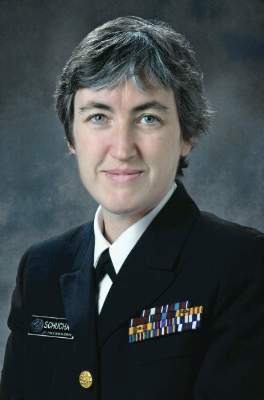User login
One-third of U.S. primary care physicians are unaware that there is a daily prophylactic medication that can reduce the risk of sexually transmitted HIV by 90% and drug needle transmission of the virus by 70%, according to the CDC.
In a Nov. 24 media briefing, Dr. Anne Schuchat, principal deputy director of the U.S. Centers for Disease Control and Prevention, said data from a recent national survey of primary care physicians indicated that 34% were unaware that a daily preexposure prophylactic (PrEP) medication was available for patients at highest risk for contracting the virus. “PrEP can only make a difference if all health care providers, not just infectious disease specialists, are aware of it and know who can most benefit from it, and if the people at greatest risk for HIV infection know PReP may be a viable treatment option.”
According to the CDC, 40,000 people are diagnosed as HIV positive annually in the United States. The CDC has identified the most at-risk groups to be 1 in 4 sexually active gay men, 1 in 5 injectable drug users, and 1 in 200 sexually active heterosexuals. The numbers are derived from an analysis of NHANES (National Health and Nutrition Examination Survey) data during 2007-2012. Dr. Schuchat told reporters that daily use of PrEP can reduce the risk of sexually transmitted HIV by 90% and drug needle transmission of the virus by 70%.
Approved by the U.S. Food and Drug Administration in 2012, Truvada (manufactured by Gilead) is a combination of two antiretrovirals, tenofovir and emtricitabine, when taken daily has been shown to be highly effective in populations most at risk for contracting HIV. The most common acute side effect of the medication is nausea, although imperiled kidney function has been reported in a small but clinically significant population taking the medication. Dr. Schuchat recommended those who use PrEP have their kidneys evaluated every 3 months.
PrEP is part of the CDC’s “high-impact plan” for containing the HIV/AIDS epidemic nationally. Other strategies in the plan include antiretroviral treatment for people already living with HIV; the correct and consistent use of condoms; public health campaigns to keep people in care and reduce high-risk behaviors; increased access to drug treatment programs; and the availability of sterile injection equipment for people who inject drugs.
The cost of PrEP, according to Dr. Schuchat, is about $10,000 annually and is covered by Medicaid.
“PrEP has the potential to dramatically reduce new HIV infections in the nation,” Dr. Jonathan Mermin, director of CDC’s National Center for HIV/AIDS, Viral Hepatitis, STD, and TB Prevention, said during the briefing. “However, PrEP [works only] if patients know about it, have access to it, and take it as prescribed.”
On Twitter @whitneymcknight
One-third of U.S. primary care physicians are unaware that there is a daily prophylactic medication that can reduce the risk of sexually transmitted HIV by 90% and drug needle transmission of the virus by 70%, according to the CDC.
In a Nov. 24 media briefing, Dr. Anne Schuchat, principal deputy director of the U.S. Centers for Disease Control and Prevention, said data from a recent national survey of primary care physicians indicated that 34% were unaware that a daily preexposure prophylactic (PrEP) medication was available for patients at highest risk for contracting the virus. “PrEP can only make a difference if all health care providers, not just infectious disease specialists, are aware of it and know who can most benefit from it, and if the people at greatest risk for HIV infection know PReP may be a viable treatment option.”
According to the CDC, 40,000 people are diagnosed as HIV positive annually in the United States. The CDC has identified the most at-risk groups to be 1 in 4 sexually active gay men, 1 in 5 injectable drug users, and 1 in 200 sexually active heterosexuals. The numbers are derived from an analysis of NHANES (National Health and Nutrition Examination Survey) data during 2007-2012. Dr. Schuchat told reporters that daily use of PrEP can reduce the risk of sexually transmitted HIV by 90% and drug needle transmission of the virus by 70%.
Approved by the U.S. Food and Drug Administration in 2012, Truvada (manufactured by Gilead) is a combination of two antiretrovirals, tenofovir and emtricitabine, when taken daily has been shown to be highly effective in populations most at risk for contracting HIV. The most common acute side effect of the medication is nausea, although imperiled kidney function has been reported in a small but clinically significant population taking the medication. Dr. Schuchat recommended those who use PrEP have their kidneys evaluated every 3 months.
PrEP is part of the CDC’s “high-impact plan” for containing the HIV/AIDS epidemic nationally. Other strategies in the plan include antiretroviral treatment for people already living with HIV; the correct and consistent use of condoms; public health campaigns to keep people in care and reduce high-risk behaviors; increased access to drug treatment programs; and the availability of sterile injection equipment for people who inject drugs.
The cost of PrEP, according to Dr. Schuchat, is about $10,000 annually and is covered by Medicaid.
“PrEP has the potential to dramatically reduce new HIV infections in the nation,” Dr. Jonathan Mermin, director of CDC’s National Center for HIV/AIDS, Viral Hepatitis, STD, and TB Prevention, said during the briefing. “However, PrEP [works only] if patients know about it, have access to it, and take it as prescribed.”
On Twitter @whitneymcknight
One-third of U.S. primary care physicians are unaware that there is a daily prophylactic medication that can reduce the risk of sexually transmitted HIV by 90% and drug needle transmission of the virus by 70%, according to the CDC.
In a Nov. 24 media briefing, Dr. Anne Schuchat, principal deputy director of the U.S. Centers for Disease Control and Prevention, said data from a recent national survey of primary care physicians indicated that 34% were unaware that a daily preexposure prophylactic (PrEP) medication was available for patients at highest risk for contracting the virus. “PrEP can only make a difference if all health care providers, not just infectious disease specialists, are aware of it and know who can most benefit from it, and if the people at greatest risk for HIV infection know PReP may be a viable treatment option.”
According to the CDC, 40,000 people are diagnosed as HIV positive annually in the United States. The CDC has identified the most at-risk groups to be 1 in 4 sexually active gay men, 1 in 5 injectable drug users, and 1 in 200 sexually active heterosexuals. The numbers are derived from an analysis of NHANES (National Health and Nutrition Examination Survey) data during 2007-2012. Dr. Schuchat told reporters that daily use of PrEP can reduce the risk of sexually transmitted HIV by 90% and drug needle transmission of the virus by 70%.
Approved by the U.S. Food and Drug Administration in 2012, Truvada (manufactured by Gilead) is a combination of two antiretrovirals, tenofovir and emtricitabine, when taken daily has been shown to be highly effective in populations most at risk for contracting HIV. The most common acute side effect of the medication is nausea, although imperiled kidney function has been reported in a small but clinically significant population taking the medication. Dr. Schuchat recommended those who use PrEP have their kidneys evaluated every 3 months.
PrEP is part of the CDC’s “high-impact plan” for containing the HIV/AIDS epidemic nationally. Other strategies in the plan include antiretroviral treatment for people already living with HIV; the correct and consistent use of condoms; public health campaigns to keep people in care and reduce high-risk behaviors; increased access to drug treatment programs; and the availability of sterile injection equipment for people who inject drugs.
The cost of PrEP, according to Dr. Schuchat, is about $10,000 annually and is covered by Medicaid.
“PrEP has the potential to dramatically reduce new HIV infections in the nation,” Dr. Jonathan Mermin, director of CDC’s National Center for HIV/AIDS, Viral Hepatitis, STD, and TB Prevention, said during the briefing. “However, PrEP [works only] if patients know about it, have access to it, and take it as prescribed.”
On Twitter @whitneymcknight
FROM A CDC MEDIA BRIEFING
Key clinical point: A third of physicians are unaware of prophylactic medication that can reduce HIV virus risk from sex by 90% and from injecting drugs by 70%.
Major finding: Transmission of HIV virus could be prevented in up to one-quarter of MSM, 70% of injectable drug users, and 1 in 200 sexually active heterosexuals.
Data source: Analysis of data from the 2007-2012 NHANES.
Disclosures: None.

